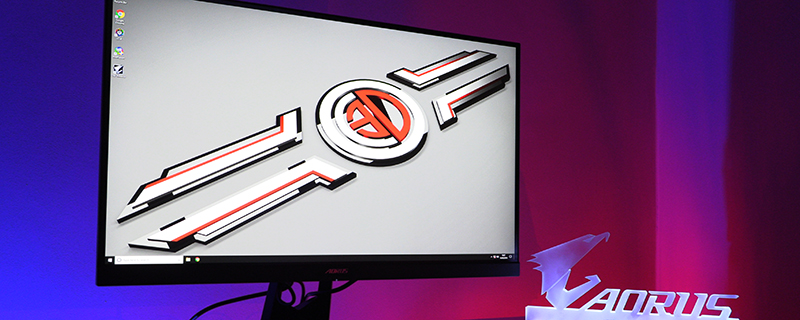Gigabyte Aorus AD27QD HDR Freesync Display Review
Conclusion
There is an awful lot packed into the Aorus AD27QD.
Let’s start with the the basics. The thing that everything thinks of when they wonder if the panel should find itself on their shortlist. The AD27QD is a good size at 27 inches. 24 inch displays are nice, and although you can get bigger panels you have to move them further away or get used to moving your head around a lot to make the most of them. 27 inches though is right in the sweet spot where it largely fills your vision so that you can get immersed in your gaming exploits, but is also compact enough that when you’re just tooling around on the internet or sorting out your photo collection it doesn’t feel like using a sledgehammer to crack a nut. This sweet spot mentality also applies to the resolution. We know that 4K and even higher resolutions are the big ticket items but they also come with a hefty performance penalty. You really need a super-high-end system to maximise the performance on those, whilst the 2560×1440 resolution of the Aorus AD27QD is high enough to eliminate most jaggies purely through resolution, but gentle enough that you can get away with a somewhat high-end card but not a bank breaking one without compromising your gaming experience. Plus of course you get so much extra screen space.
The three major image quality benefits that the Aorus AD27QD has are the use of an IPS panel, a massive step up from a TN panel, and the inclusion of AMDs FreeSync technology and the latest market sweeping technology, HDR. IPS panels might seem expensive when you’re on your retailer of choice and sorting my price low to high, but the benefits cannot be overstated. As we said in our introduction you spend an extraordinary amount of time looking at the screen, so why would you put all your investments into the system and not them have it display your hard earned performance at its best? IPS panels have better colour reproduction and wider viewing angles and just look much sweeter than their TN cousins. Additionally the 144Hz refresh rate of the Gigabyte monitor is perfect for giving you super smooth gaming in those titles where the difference between death and glory can be measured in milliseconds. You aren’t forced to compromise the smooth visuals though as the use of AMDs FreeSync technology guarantees that your image wont tear regardless of how variable your frame rate might be. We all know that there are those sections in games where the whole world suddenly explodes and things grind to a halt, but FreeSync happily adapts to any frame rate and keeps your image rock solid. Yet another advantage in your favour. Speaking of which the use of HDR not only gives you more detail in the dark sections, and richer colours in the less shadowy parts, but the Black Equalizer and aim stabilizer, along with the ability to have a hardware rendered cursor on screen, start to give you a seriously unfair advantage over your competition. “Think you are hidden in that shadowy area my friend? Ha, with all these things at my disposal you are about to become a pink mist”.
Lastly we must give a shout-out to the designers of the stand for the Aorus AD27QD. There is plenty of adjustment available to you in terms of portrait/landscape modes, height adjustment, angle adjustment and the like. In short, if you want your monitor to be in a particular place, angled a particular way, the AD27QD has you covered. Even the moving of the OSD joystick to around the back might seem like a bad piece of design but a) you almost never adjust your screen once it’s been calibrated the first time and b) the Aorus AD27QD is able to be controlled using a software package in the same way that you might control your keyboard or mouse. So not only is it more user friendly with none of that “is it four presses or five to select the next item on the menu?” rubbish that most OSDs suffer from, but once you are set up then the front of the bezel looks smoother because it’s free of buttons.
The Gigabyte Aorus AD27QD is a seriously good effort from Gigabyte with a great feature set, excellent image quality, glorious HDR, supremely user friendly OSD and stand and the sweet spot of resolution and size, all wrapped up in a package that costs just £534.99 for an Innolux HDR panel. There is nothing not to like.
Discuss the Gigabyte Aorus AD27QD HDR FreeSync display on the OC3D Forums.




